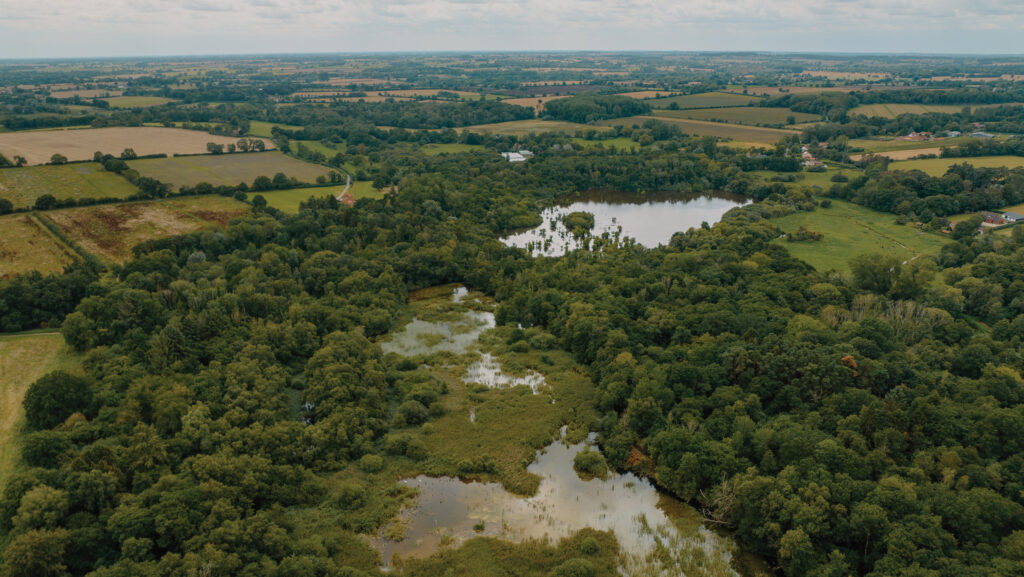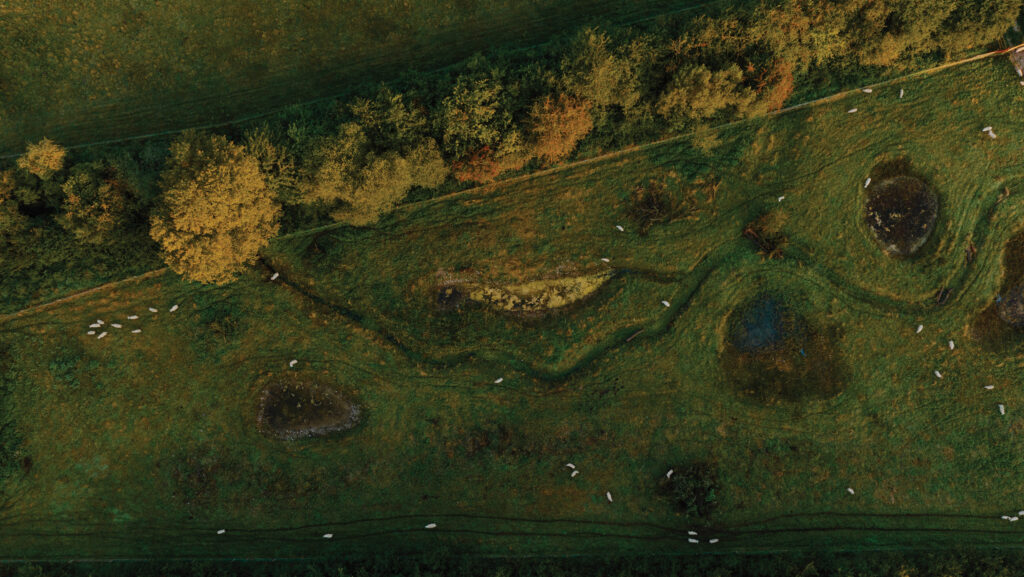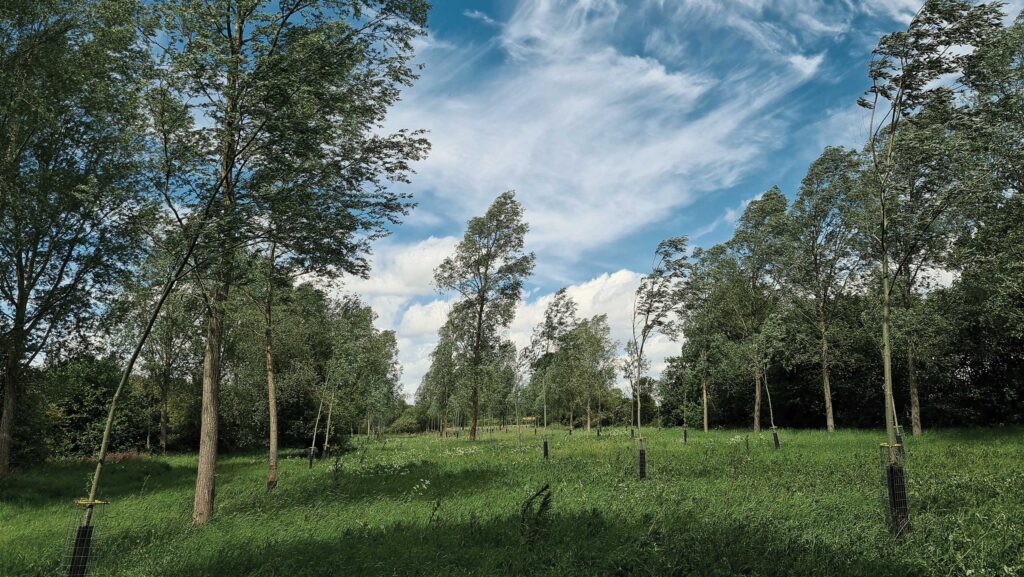Nature markets offer range of opportunities
 © Dan Casson
© Dan Casson The continuous development and expansion of the range of environmental funding makes this area difficult to keep up with and challenging to decide what might work in the short or long term.
Some farmers are already entering 30-year biodiversity net gain (BNG) agreements, selling habitat units they are creating on their land to developers to help them meet an obligation to achieve an uplift of at least 10% in biodiversity associated with their sites.
Others in certain English river catchments are signing land up to commitments of up to 120 years under nutrient neutrality (NN) requirements to help mitigate the nitrogen and phosphate impacts of developments.
See also: Biodiversity net gain – legal issues for farmers
Funding types
As well as secure government funding such as the Sustainable Farming Incentive (SFI) and Higher Tier Countryside Stewardship in England, there is also support for Landscape Recovery projects which incentivise farmers to form groups to deliver improvements on a larger scale.
Separately, businesses both large and small are beginning to look for private agreements for projects on farmland, driven by the desire to be seen to be doing good for the environment, says Susan Twining, chief land use policy adviser at the Country Land and Business Association (CLA).
Christopher Sparrow of adviser Recce Rural manages nature trades for the Environmental Farmers Group, a landscape scale partnership in the Hampshire Avon Valley, and is selling BNG and NN units for the group.
This statutory market has been a hard apprenticeship, he says. “It’s been tough, everyone has been starting from scratch.”
Voluntary market
The voluntary market, where businesses will be looking for private agreements, will offer scale. “That’s when those markets will really fly,” says Christopher. “In the next three to five years, demand will outstrip supply.”
Farmer and consultant Glenn Anderson is putting his own land into the 809ha Wendling Beck nature recovery project in Norfolk.
“It is very early days in these markets,” he says. “There isn’t a huge amount of money changing hands, but there is a lot of hope and conversations going on.
“There are a lot of projects that are quite poised very close to investment now so we really need to get a few of those through the door to give landowners and investors alike a bit of confidence in this.”
In his consultancy role he sees a growing interest in institutional investment in carbon, principally through the government-backed woodland and peatland carbon codes.
Corporate interest in investing in farmland-based projects will grow as businesses begin to show more interest in the United Nations’ Taskforce on nature-related financial disclosures (TNFD), he says.
TNFD is presently voluntary and covers the assessment, disclosure and management of nature-related risks and impacts of businesses and financial institutions worldwide.
Global reach
“Over time that could become a big driver into nature markets, but we really need governments globally to get behind some of these policies… as organisations are being audited to really understand what’s going on,” says Glenn.
“Without that compliance element of understanding what’s happening on the ground, it’s going to take a long time for those markets to take off.”
Philanthropy also fills some funding gaps in private nature markets, with this type of investment often being people-centred, he says. “If philanthropists are advancing funding, they like to make sure there will be a benefit to wider society.”
Three models for BNG – and a costs warning
Several advisers and farmers stressed the importance of careful costings in the process of assessing the potential of BNG and its delivery.
There are three models for delivery of BNG units:
Self-delivery
Here the landowner takes on the cost and risks of the project: baseline surveys, assessing the potential of the land to provide units, establishment, management and monitoring costs, legal and other professional fees such as agents, tax and ecology advice.
It is also then up to the landowner to find a secure buyer for the units, although a broker can be used.
This route has higher costs and risks for the landowner, but higher potential rewards than other options, with the cash for the units coming in at the start of the project in a lump sum.
“If you’re taking the money up front, think about the inflation effect, make sure you have got your costs and budgets well thought out, baselining costs can be very expensive,” advises farmer and consultant Glenn Anderson.
“Costs will evolve over the project – establishment may not work as well as you expect or hope,” he says, citing his own experience of poor germination of seed as a result of the 2022 drought, and adding that weed control can be an early issue.
This was echoed by Archie Ruggles-Brise, of Spains Hall Estate in Essex, where thistles and fat hen were a particular problem on arable reversion land in the first two years of the BNG journey, leading to far higher glyphosate use than expected.
Group/hybrid approach
This still relies on the landowner creating and managing the units, but a group approach can reduce cost and risk, as a group can more easily afford professional and other fees.
It can also offer a larger number of units to trade, so has more strength in a market.
This approach has led to the Environmental Farmers Group (EFG) now representing 267,000ha or 3% of England’s farmed area.
It involves 560 farmers, aiming to deliver biodiversity and species recovery by 2030, along with clean water and carbon net zero by 2040.
EFG operates a model under which all members benefit from any BNG or other natural capital trade.
Habitat provider model
There are differing options within the provider model.
A common scenario is that the landowner receives an annual payment rather than a lump sum, with a habitat provider taking a lease on the land, creating and selling the units.
This reduces the risk for the landowner as they do not need to find a buyer for the BNG units and will be paid whether or not the units are created or sold.
The landowner will typically be offered a contract with a fee, separate to the annual BNG units payment, to undertake the establishment and management of the habitats.
Questions answered
What will a BNG agreement do to the value of my land?
It can add value depending on how it is done – for example, by undertaking BNG in small patches across a whole farm, the additional amenity value can raise the overall value of the holding.
However, for larger scale projects, as there is no clarity about the status of land at the end of a 30-year BNG agreement, there is uncertainty about the impact on value.
Few advisers expect that it will be permissible to return the land to full agricultural production at the end of the BNG agreement period.
Speakers at Groundswell pointed out that where land was being used as security for borrowing, banks would need to know about long-term land use change for nature markets, and also where a third-party interest in land was created, for example by a lease.
What are the likely legal costs?
To put the legal agreements in place for a self-delivered scheme is likely to cost about £10,000 plus VAT, says Sophia Key of Birketts, although she stressed that the cost will depend on each scheme.
Archie Ruggles-Brise of Spains Hall Estate (see panel) says that his legal costs were higher than this, despite the developer paying half.
People need to be aware that they will have legal costs for both a BNG agreement with the developer and a Section 106 agreement or conservation covenant, he points out.
Early agreements would have had higher costs than current ones, says Glenn, as lawyers were working in a new area on the Section 106 planning agreements covering the BNG projects.
He puts typical BNG legal costs for landowners in the £10,000 to £15,000 region, which will include some of the local planning authority’s costs.
Where do I start?
Look at your local authority plan and at what planning applications are being made.
“Assess your baseline early and work with the land and its history – where are, or were, your old ponds and old woodland belts?
“Work with the land and the habitats that naturally want to go in the direction you are considering,” says Archie Ruggles-Brise. “You can’t force a meadow on land that wants to be woodland.”
BNG – outstanding issues
Agricultural property relief While the budget confirmed that land in statutory schemes such as ELM, BNG and nutrient neutrality projects would continue to attract agricultural property relief (APR) from inheritance tax (IHT), there is no answer yet on whether land in private nature market agreements will also qualify.
Tax on BNG income It is unclear how payments for BNG units will be taxed, whether income or capital gains. Some expect it to be a mixture of the two.
Nationally significant infrastructure projects (NSIPs) These are subject to a different planning regime and go straight to a planning inspector – for example, road, rail and large energy developments.
Demand for BNG units is expected to increase next year when NSIPs come into the BNG net. However, it is open to question as to whether NSIPs will be able to use their considerable compulsory purchase powers to buy land for BNG.
If this is the case, there is a concern that they may buy more land than they need for this purpose and then sell the additional units.
Insurance, habitat failure or loss Insurers are looking at the BNG market, for example, to cover habitats being lost to fire or other risks and whether this should be based on consequential loss or compensating for the investment in establishing the project.
Clarity is needed on force majeure, both for insurance and contract purposes, as it may be defined differently in different agreements. For example, climate change or other factors could prevent creation of the number of units committed to.
“We really need some guidance from Defra on this,” says Glenn.
Wendling Beck project

© Dan Casson
This is an 809ha nature recovery project across four sand land farms in Norfolk, most of which will come out of production.
“Our motivation initially was financial, to reduce the impact of the loss of BPS. That was our first focus, but now it is more environmental,” says Glenn Anderson, one of the four farmers involved, and who is also a nature restoration consultant with land use change adviser Swallowtail.
The project, for which a limited liability partnership has been formed, includes a large acreage of regen blackcurrants, but is otherwise transitioning to all grazing in a mosaic of species-rich grassland, woodland and scrub.
It has created 400 biodiversity units and will eventually create more than 3,000 units, sequester 250,000t of carbon and restore 5,000m of river.
“We have BNG deals on the table and are waiting to conclude our conservation agreement,” says Glenn.
Project partners include Anglian Water, Norfolk Rivers Trust, Norfolk Wildlife Trust, the Nature Conservancy, Norfolk County Council, Farming and Wildlife Advisory Group, Natural England, and Breckland Council.
“We have a 100-year finance plan for landowners in Wendling Beck and it’s been really quite challenging to get all the governance in place,” says Glenn.
Environmental funding types – England
Government schemes
Agri-environment and woodland creation schemes – these are targeted, are subject to change and generally relatively short term but secure.
Further valuable schemes include Natural England’s Species Recovery Programme, offering £14.5m in grants for specialist habitats, with 63 projects funded in 2023.
Flood risk management is also a growing area. Defra and the Environment Agency fund the Natural Flood Management Programme, which spent £25m on 40 projects in 2023, with 60 already established.
Offset markets
These are also known as compliance markets, some through statutory schemes such as biodiversity net gain or nutrient neutrality, which have strict compliance requirements, are long-term, and in most cases have high entry costs.
Voluntary offset markets include carbon and a wide range of nature projects, with the only government-backed examples being the Woodland Carbon and Peatland Carbon codes.
Business funding
This is an emerging market involving retailers and brands incentivising farmers to undertake certain practices, observe restrictions or otherwise alter the use of their land.
Water companies are active in this market – for example, paying farmers to undersow maize with grass to reduce run off, or reducing pesticide applications and/or fertiliser rates.
These often apply across a range of enterprises and are not obligatory.
Charities
Bodies such as the Woodland Trust and wildlife trusts, along with other national and local organisations, fund environmental and natural capital work to varying levels, and can involve local businesses.
Free advice is often available through this route, and sometimes voluntary labour.
Natural environment investment readiness fund
Attracting private investment into nature markets is expected to continue to be a government ambition so that the target set out in the Environmental Improvement Plan and Agricultural Transition Plan for England can be met.
The Natural Environment Investment Readiness Fund (NEIRF) was established by Defra and the Environment Agency to help achieve this. NEIRF provided grants of between £10,000 and £100,000 to farmers, environmental groups,
local authorities, businesses and others to help develop nature projects in England and attract private investment.
The first two rounds of NEIRF funding supported the development of 86 projects across England.
The the third and most recent round supported farmers and farmer groups in particular.
Grants help with the costs of staff, professional and technical support to develop projects and to present compelling cases to potential investors.
Proposals were asked to focus on generating revenue from ecosystem services alongside food production, rather than through the sale of goods or commodities.
Examples could include selling carbon units from woodland creation or peatland restoration, selling biodiversity units, or selling catchment services such as improved water quality and natural flood management benefits resulting from improvements to the natural environment.
Farming toolkit helps assess market opportunities
A free online farming toolkit has been designed by the Green Finance Institute, with Defra backing.
Developed in consultation with farmers, the toolkit introduces the different types of nature markets, answers common questions, and includes case studies of those taking steps into these areas.
No data is needed from farmers to use the toolkit, nor does it promote nature markets as the best option for everyone. It explains eight milestones in the process, from assessing land opportunities, to signing contracts.
The toolkit can be found on the Green Finance Institute website
Spains Hall Estate, Essex

© Spains Hall Estate
Archie Ruggles-Brise made his first BNG sale last week. He and his family have 830ha in Essex, 500ha of which is farmed in-hand.
This land was predominantly in arable and is being shifted from annual to permanent production.
The move includes the largest agroforestry (silvoarable) nut planting system in Europe, on land which is in a 200ha Countryside Stewardship agreement.
Elsewhere, BNG units are being created on up to 115ha of predominantly grassland, floodplain, wetland management and where beavers have been released on part of the area.
The estate also has 80ha of woodland, with a further 17ha of planting planned.
It took about 14 to 15 months from the initial inquiry by a developer to completion of the first BNG deal, says Archie.
“It was tricky time to work through – new guidance emerged as we went through the process.”
Between the willows in the image above are species-rich grasslands, herbal leys and wildlife mixes supporting biodiversity, building soil, sequestering carbon, trapping and cleaning water, and helping mitigate drought.
